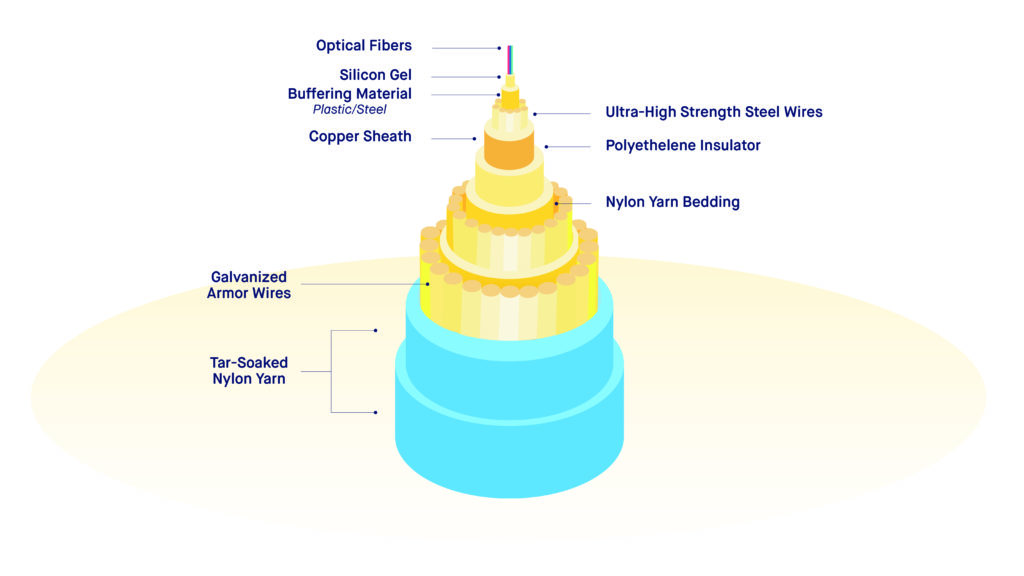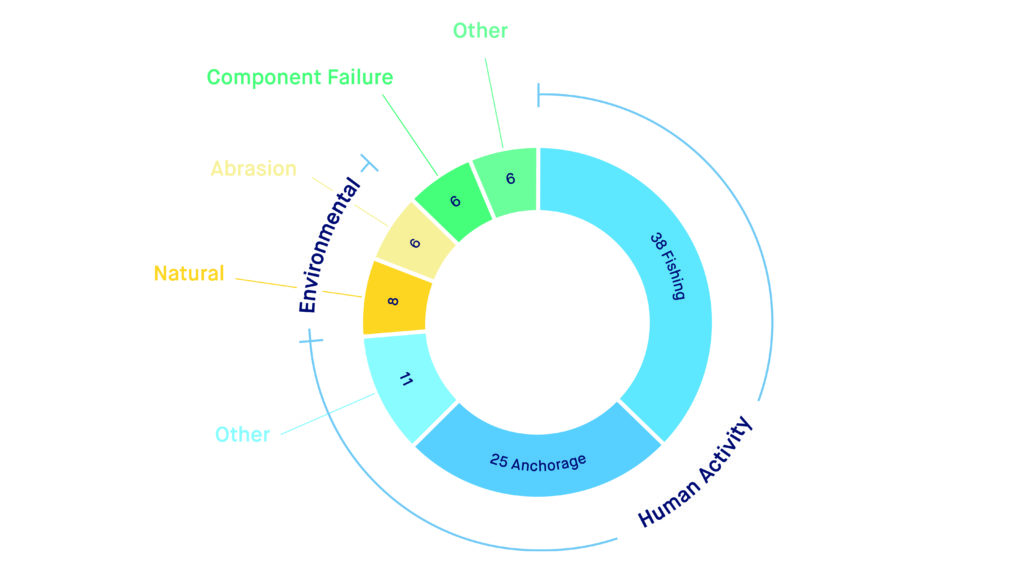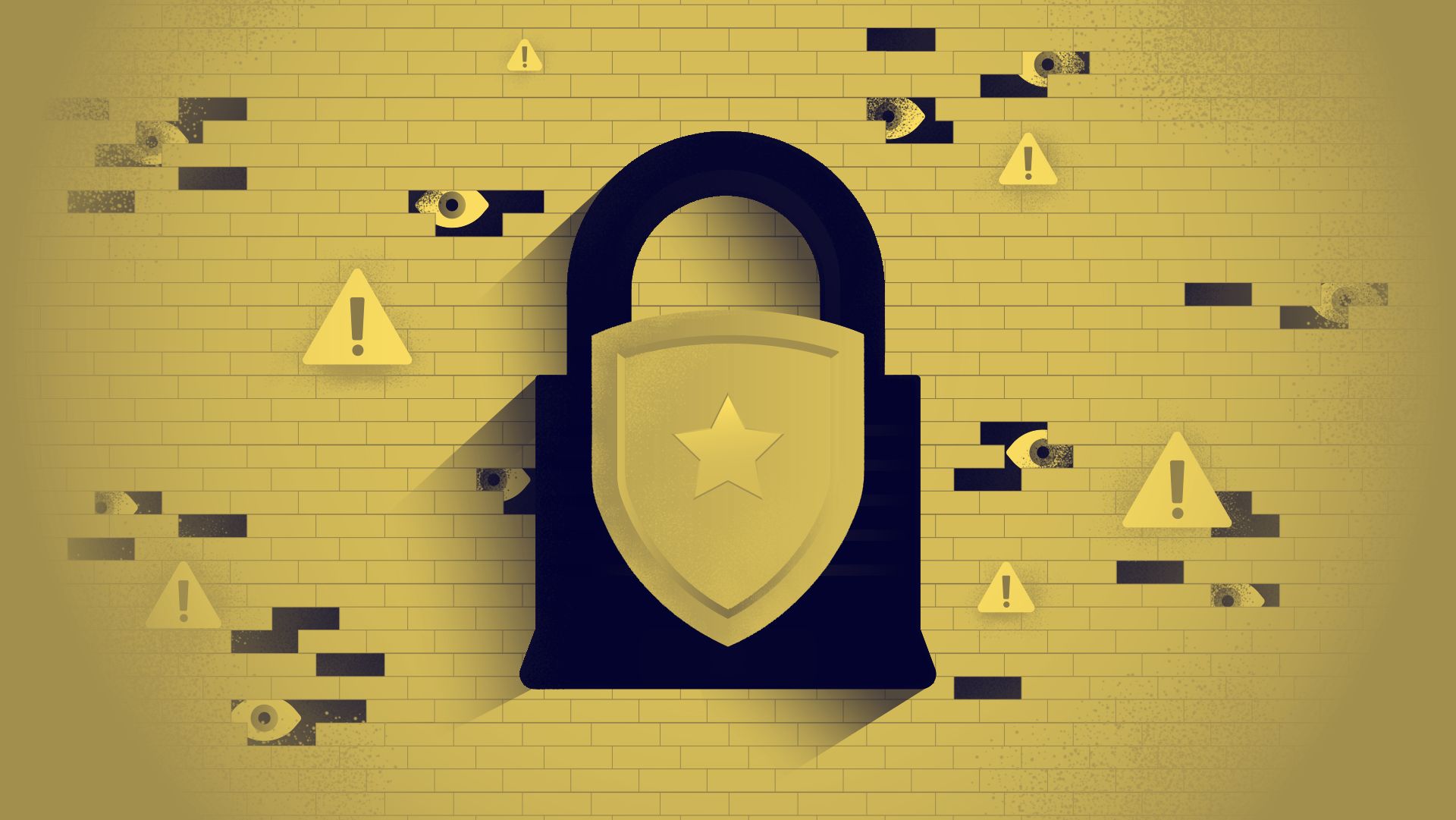When it comes to the internet, digital information and the speed at which we access it, many people are still unaware that the world is heavily reliant on the enormous interconnected system of fiber-optic undersea cables. These submarine cables remain the least expensive, fastest and most efficient way to transmit information, and are still the backbone of the internet
What are undersea cables and where do they exist?
Undersea cables use fiber-optic technology to transmit 99% of international data around the world. According to TeleGeography, there are approximately 380 of these cables currently in service across the globe, with this number constantly changing as new cables are laid and older ones are decommissioned. The cables themselves are laid between land-based internet stations, connecting nations domestically and internationally.
The internet is often associated with wireless or satellite connection in the digital age of global communications. The act of laying these cables beneath the sea to connect our nations may seem like quite a dated concept. The reality is, however, that the satellites in operation still cannot match the speed at which information travels via the undersea fiber-optic cables. Satellites face the two significant problems of latency and bit loss, so for the time being, submarine cables will continue to be the primary method of connecting us to the internet as global internet traffic continues to increase.
Although these cables vary in length based on the route that they are connecting, the cables can also differ in thickness depending on the depth at which they are laid.

The cables that are laid in shallow water are buried beneath the sea bed. These cables are more susceptible to aquatic threats and therefore need extra protection, which is why they are larger in diameter.
The cables in deep sea areas, on the other hand, are thinner, since they face less threats in those depths. These cables are simply laid directly on top of the ocean floor.
Nearly all nations that have a coastline are connected to at least one of the many cables in service around the globe. Seeing as each cable can carry an enormous amount of information, there are still many nations which rely on only a few cable systems. Unfortunately, this means that in some places a single fault can have devastating effects on the internet.
Several locations around the world with denser population of undersea cables are at a higher risk of damage should natural or manmade disasters occur. One such site is located between the Philippines and Taiwan where a large number of submarine communications cables are funneled through the ocean between the two nations.

This undersea cable map from TeleGeography shows the submarine cables connecting the Philippines and neighboring nations. You can see the full visual representation of the different undersea cables connecting our nations across the globe here.
How are undersea cables installed?
The thought of fiber-optic cables physically connecting every continent in the world (except for Antarctica) is quite mind-boggling. For example, the SEA-US cable between the Philippines and the United States is roughly 15,000km in length. So how exactly do cables of this astonishing length get installed?
The undersea cables are laid down on the ocean floor by specially-modified ships, known as cable-layers. These ships slowly unreel the cable along a charted route produced by the cable operator. Incredibly, such ships can lay up to 200km of cable in a day, with the ships themselves capable of carrying up to 2,000km of cable.
As you would expect, the cable cannot simply be laid on a purely direct path between two landing points, as they must be careful to follow the safest path to not disrupt the precious coral reefs and fish beds that inhabit the ocean. Whilst attempting to lay the cable on flat seabed areas as much as possible, the route has to navigate the huge mountains, valleys and rugged areas of the ocean floor. Thus, producing the best route for the sea cable to take requires a significant research and planning process, featuring important preliminary exploration expeditions.
Burying the cable beneath the sea bed in shallow areas also ensures that they do not present a hazard in fishing and anchoring zones. In order to bury the cables beneath the sea bed, the cable-layers utilize a cable-plough device to dig the trench in which the cable lays. The current of the ocean helps to cover the trench with sand, saving on the time and effort taken to bury the cable.
At extreme depths of up to 8,000 meters below sea level (as deep as Mt Everest is tall), the constantly moving cable-layers amazingly have to aim the cable over 16,000 meters behind them, as the cable sinks in at an angle behind the vessel.

Once laid, each cable is expected to last up to 25 years beneath the ocean before naturally deteriorating and corroding due to salt water and sand abrasion. Although these environmental factors account for only 14% of total cable faults, the majority of cables are damaged by human activity, such as fishing and shipping anchorage.

How are undersea cables repaired?
When cables are damaged or defective, divers and specialized small submersibles are deployed to assess the damage. This process, which can often take weeks as the cable fault is localized, involve recovering the damaged cable and raising it onto the ship for repair or replacment.
When the damaged cables are located in depths less than 6,500 feet, a submersible robot can be deployed to find the fault and bring it up to the ship. In depths beyond that, technicians on the ship use grapnels to retrieve the cables.
The damaged section is fixed by the technician who splices the new section of cable to each cut end of the original. Repairing damaged cables is a delicate process that can take up to 16 hours to complete.
Owning vs renting undersea cables: which is the better option for internet service providers?
As you may have guessed, purchasing and maintaining vast numbers of undersea cables is an extremely expensive task, often costing hundreds of millions of dollars. Therefore, for many internet service providers it is not financially viable to own sea cables. The question then becomes, who owns undersea cables?
Undersea cables have typically been owned by telecommunications providers, although 2016 saw a shift in ownership as large tech companies such as Google, Amazon, Facebook and Microsoft all sought to get their hands on these undersea cables. For such huge conglomerates, the idea of ongoing massive bandwidth growth and greater reliability is clearly an exciting prospect, making the ownership of these cables a logical decision. Having the ability to effectively control the latency on such cables is a grand power to wield, with cable investments growing in line with the growth of these organizations’ cloud capabilities and global internet traffic. These new cables would present an opportunity to further increase diversity in the future.
Due to the high costs of these cable systems, the consortium financing model is often employed. This is where a group of organizations interested in buying capacity along a particular cable system will pool their resources and build the cable together, subsequently sharing the capacity of the cable to transmit data packets. Although ownership of the undersea cables is a desirable goal for some organisations, renting or purchasing a capacity on certain undersea cables is often the route that the majority of Internet Service Providers take.
It costs significantly less for ISPs to buy capacity on different cables than to purchase and own undersea cables. Buying capacity allows ISPs to utilize numerous transmission lines or routes in case one line experiences a fault or extremely high levels of traffic and ensure customers are not cut off from their internet service. This is something to keep in mind when selecting an internet provider, as you want to know which domestic cable systems they traverse. RISE has leased capacity on all three undersea cable systems between Cebu and Manila in order to provide the maximum level of availability.
Undersea Cables used by Internet Service Providers in the Philippines
For a country like the Philippines, the sea cables connecting the islands and the rest of the world are crucially important to accessing information online. There are now 10 international submarine cable systems landing 9 cable landing stations in the Philippines. As the majority of content accessed in the nation is hosted outside of the Philippines, international connectivity for ISPs is crucial.
With the Philippines holding an important position in the business process outsourcing (BPO) industry, diversity of undersea cable connectivity is an essential factor in the success and growth of the nation’s economy. One of the major cable networks utilized within the Philippines is the PLDT Domestic Fiber Optic Network (DFON). The PLDT network has landing points in Butuan City, Cebu, Dumaguete and Roxas to name a few. The National Digital Transmission Network (NDTN), owned by TelicPhil, is another key cable system running from the top of Luzon in Cagayan down to connect with the landing station in Dumaguete.
The installation of the SEA-US submarine communications cable significantly upgraded the international connectivity capacity of the Philippines, directly connecting the nation with the United States. Whilst previously all the international data from Mindanao had to travel up through the Philippines and exit somewhere in Luzon, it can now exit out of Davao and travel directly to the US along this line.
Another new undersea cable system helping to link the Philippines with the US, called Jupiter, is scheduled to be ready for service in 2020. This is another big step in connecting the Philippines with Japan and the US. Amazon and Facebook are two of the organizations that have signed agreements to build and operate this system, capable of transmitting 60 terabytes of data per second (TBps). The Jupiter cable system will help to meet the growing traffic and complement other cable systems with increased capacity and diversity in the Pacific Rim region. With more and more households utilizing digital services, the Jupiter cable system will be a valuable addition to the rise of the Philippines internet service speed.
The Philippines is growing and with the addition of new cable systems such as Jupiter, the capabilities for the internet will keep expanding. It is important to remember as a consumer that you should be choosing an Internet Service Provider that has capacity on multiple cables to ensure you have consistent access to quality high speed internet.



